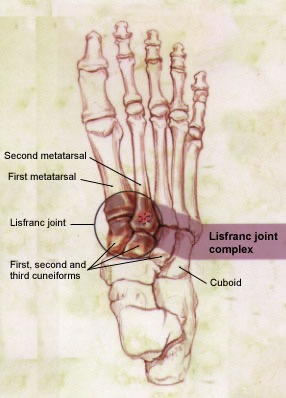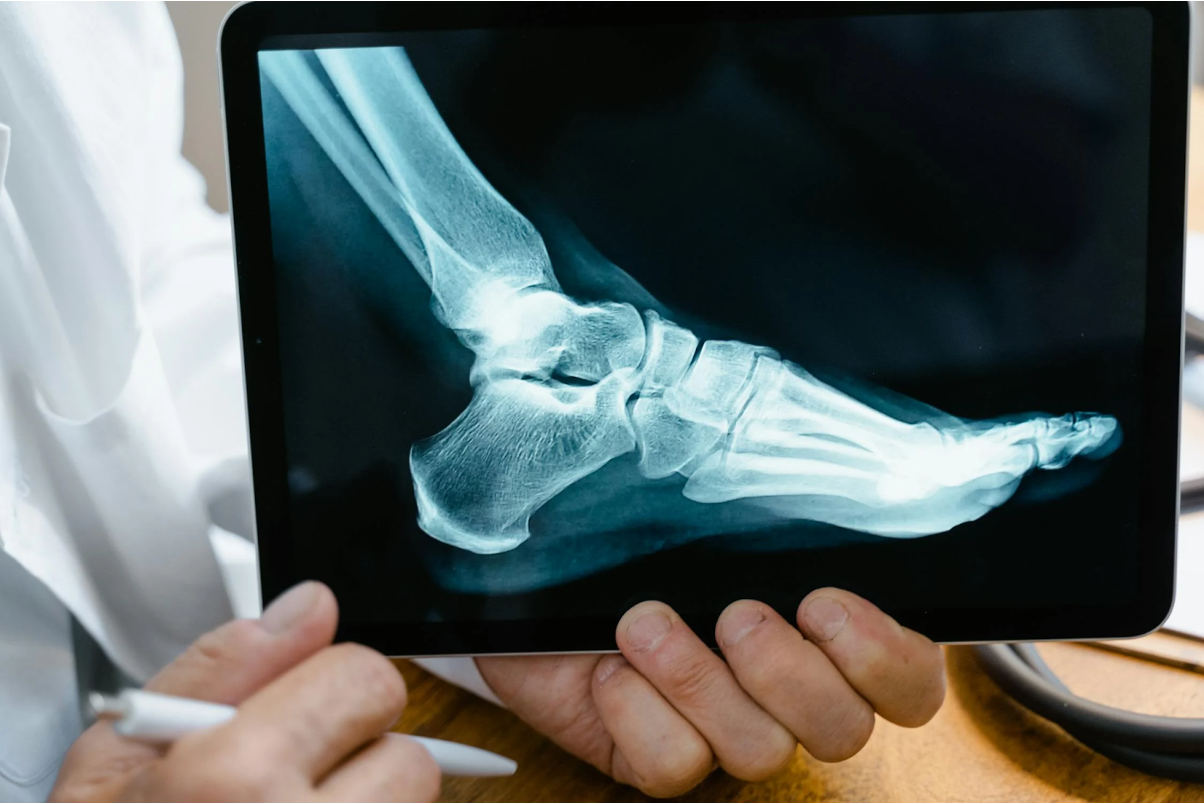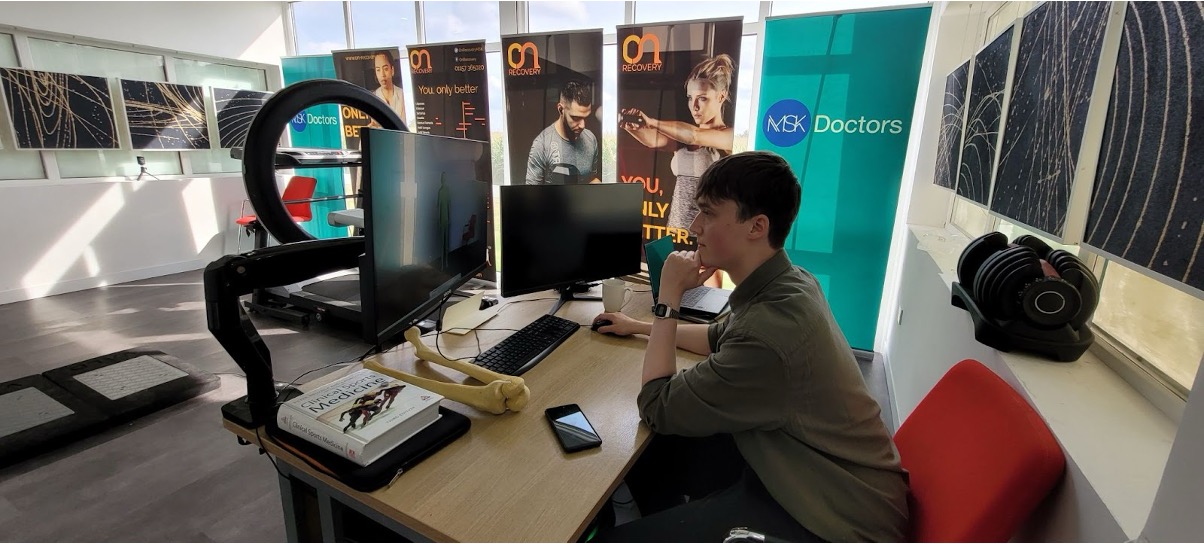Lisfranc Joint Pain: Symptoms, Causes, Recovery Treatment
:format(webp)/cdn.mskdoctors.com/storage/2025/3/Q39YKAUCyCDU2Q5PeMPfQMvSJeXfQmmT.jpg)
Key Takeaways
-
The key symptoms of Lisfranc injuries include midfoot pain, swelling, bruising, and difficulty bearing weight.
-
Lisfranc injury can result from high-impact sports, a fall, motor vehicle accident, or progressive degeneration.
-
Some Lisfranc injuries may respond to non-operative treatments like immobilisation and physiotherapy, but more severe cases often require surgical intervention to properly realign the joints and restore midfoot stability.
-
Rehabilitation from a Lisfranc injury typically spans 6-12 months.
-
At MSK Doctors, our multidisciplinary team offers advanced diagnostic imaging, customised treatment plans, and specialised rehabilitation programs for midfoot injuries.
Lisfranc Joint Pain Basics

The Lisfranc joint plays a key role in stabilising the arch of the foot. (Image courtesy of AARP)
The Lisfranc joint complex comprises several bones and ligaments in the midfoot. Named after a French surgeon, Jacques Lisfranc, this area is pivotal for weight-bearing and balance. When the Lisfranc joint is injured, it can disrupt the alignment and function of the foot.
Injuries can occur in the form of fractures, dislocations, or ligament tears. The complexity of the joint means that even minor injuries can lead to significant pain and dysfunction if not treated properly.
Lisfranc injuries are often misdiagnosed as simple sprains, which can delay proper treatment. Prompt and accurate diagnosis is vital for preventing long-term damage and ensuring a full recovery.
|
Common Symptoms
-
Swelling and tenderness on the top of the foot.
-
Bruising on the bottom of the foot, which is a distinctive sign.
-
Pain that worsens with standing or walking.
-
Inability to bear weight on the affected foot.
-
Changes in the shape of the foot or visible deformity.
Primary Causes
Lisfranc injuries can occur due to various reasons, most commonly as a result of trauma. Here are some typical causes:
-
Direct impact injuries, such as dropping a heavy object on the foot.
-
Twisting or falling accidents, where the foot is caught and twisted forcefully.
-
Sports-related injuries, particularly in activities that involve sudden changes in direction or impact.
-
Motor vehicle accidents, which can exert extreme force on the foot.
Diagnosis and Tests
Medical Examinations

An X-ray can reveal fractures and dislocations.
During a medical examination, the healthcare provider will assess the foot's appearance, check for swelling, bruising, and tenderness, and evaluate the range of motion. They may also compare the injured foot to the uninjured one to detect any abnormalities.
The patient's history, including how the injury occurred, plays a key role in the diagnosis. Providing a detailed account of the incident can significantly aid the healthcare provider in making an accurate diagnosis.
Imaging Techniques
X-rays are typically the first step, as they can reveal fractures or dislocations. However, some injuries may not be visible on an X-ray, especially if they involve only ligaments.
In such cases, an MRI or CT scan might be necessary. These advanced imaging techniques provide a detailed view of the bones and soft tissues, allowing for a comprehensive assessment of the injury.
Treatment Approaches
Non-Surgical Methods
For many Lisfranc injuries, non-surgical methods can be effective, especially when the bones are not displaced. The primary goal of non-surgical treatment is to allow the injured ligaments and bones to heal naturally, minimising pain and restoring function.
The first step often involves immobilisation of the foot. This can be achieved using a cast or a walking boot to prevent movement and support the healing process. Typically, you will need to keep weight off the foot for several weeks, using crutches or a wheelchair as needed.
Besides immobilisation, anti-inflammatory medications like ibuprofen and acetaminophen can help manage pain and reduce swelling. Elevating the foot and applying ice can also aid in controlling inflammation and discomfort.
Surgery
Surgery aims to realign the bones and repair any torn ligaments, ensuring the joint's stability and function.
Two main surgical techniques are commonly used: open reduction and internal fixation (ORIF) and fusion. ORIF involves repositioning the bones and securing them with screws or plates. Fusion, on the other hand, permanently joins the bones - eliminating the joint but providing stability.
Each surgical option has its benefits and potential risks. The choice of procedure depends on the severity of the injury, the patient's overall health, and their activity level.
Physical Therapy
Once the initial healing phase is complete, physical therapy helps regain strength, flexibility, and function in the foot.
Therapists can design a customised program that includes exercises like gentle ankle pumps and towel scrunches to improve range of motion, balance, and muscle strength. Gradual weight-bearing exercises like single leg stances and mini squats help the foot adjust to normal activities - reducing the risk of re-injury.
Therapists can also provide guidance on proper footwear and techniques to avoid stress on the foot. This well-rounded approach ensures a smoother transition back to daily activities and sports.
Expected Recovery Timeline
Recovery timelines can differ, but here's a general overview:
-
Initial immobilisation: 6-8 weeks without weight-bearing.
-
Gradual weight-bearing: 2-4 weeks with physical therapy support.
-
Full activity resumption: 3-6 months, depending on progress.
Regular follow-up with healthcare providers ensures the recovery is on track. Ensure to communicate any concerns or setbacks to adjust the treatment plan accordingly.
For athletes, returning to sports may take longer, as additional time is needed to regain full strength and agility.
Preventing Future Issues

Choose footwear that provides support and cushioning to reduce the risk of injury.
Preventing future Lisfranc injuries involves a combination of awareness and proactive measures. Wearing appropriate footwear that provides support and cushioning can significantly reduce the risk of injury.
Strengthening exercises like toe curls and seated calf raises for the foot and ankle muscles help improve stability and prevent falls or twists. Being mindful of the environment, such as avoiding uneven surfaces, will minimise the risk of accidents.
For those involved in sports, incorporating balance and agility training into the routine can enhance performance and reduce injury risk.
MSK Doctors: Expert Care for Lisfranc Joint Pain
At MSK Doctors, we understand the impact that Lisfranc injuries can have on your life. Our team is dedicated to providing comprehensive care that combines expertise with compassion.
Our goal is to help you recover fully and return to your daily activities with confidence. Choosing MSK Doctors means partnering with professionals who prioritise your well-being. Our approach is all-encompassing, considering not just the injury but your overall health and lifestyle.
With state-of-the-art facilities and a team of experienced specialists, we are equipped to handle even the most complex cases.

We believe in empowering our patients with knowledge and support throughout their recovery journey.
Start your path to recovery with us and experience the difference that expert care can make in your life.
Book your consultation with MSK Doctors today.
Frequently Asked Questions (FAQ)
How can I differentiate between a sprain and a Lisfranc injury?
While both conditions can cause pain and swelling, there are key differences. A Lisfranc injury often results in bruising on the bottom of the foot and significant pain when weight is applied. In contrast, a sprain typically involves less severe pain and may not have the same distinctive bruising.
What are the risks of not treating a Lisfranc injury promptly?
Delaying treatment for a Lisfranc injury can lead to serious complications. Without proper intervention, the injury can result in chronic pain, arthritis, and even permanent disability. The foot's structure can become compromised, affecting your ability to walk and perform daily activities.
Is surgery always required for Lisfranc injuries?
Surgery is not always necessary for Lisfranc injuries. The decision depends on the severity and nature of the injury. Non-surgical treatments, such as immobilisation and physical therapy, can be effective for less severe cases.
How long does it take to recover from a Lisfranc injury?
Recovery time varies based on the severity of the injury and the treatment method. Generally, the initial healing phase can take 6-8 weeks, during which weight-bearing on the foot is limited. Following this, a gradual return to normal activities is encouraged with the help of physical therapy.
What makes MSK Doctors the top choice for Lisfranc injuries?
MSK Doctors stands out because of its commitment to excellence and patient care. Our team of specialists brings a wealth of experience and expertise in treating Lisfranc injuries. We use state-of-the-art diagnostic tools and cutting-edge treatment methods to ensure the best possible outcomes for our patients.
:format(webp)/cdn.mskdoctors.com/storage/2025/5/qf6zY2JVctL0BGJLEryU4lLIeRBsr5fC.jpg)
:format(webp)/cdn.mskdoctors.com/storage/2025/5/J26J2SuguZTzYNmqcI1EFk6a2wJsUF4a.jpg)
:format(webp)/cdn.mskdoctors.com/storage/2025/5/C4LMXVp2sVqlw6pSc34aXpbl7ZEFTXUS.jpg)
